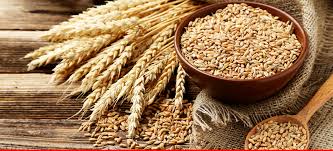By Muhammad Luqman
Hybrid wheat variety will be available in Pakistan for commercial cultivation by the year 2022 , helping the South Asian nation to increase crop production by at least 40-45% as compared to the conventional seed varieties.
“Field trials are in progress in collaboration with China’s Beijing Academy of Agriculture Sciences . Research work has cost US $ 2.5 million over the last five years,” said chief executive of private agri research firm, Guard Agricultural Research and Services Shahzad Ali Malik while talking to journalists in Pakistan’s eastern city of Lahore on Saturday.
He said that the hybrid wheat would have the same taste and tests currently under way were giving encouraging results.
Malik, whose company markets mainly markets paddy seed, said Guard Agricultural Research and Services had focused on innovation and research. “We are producing 45% of seeds locally and will enhance the ratio to 80% next year,” he said. “Locally produced seeds are better than the imported ones.”
Agricultural scientists of Muhammad Nawaz Sharif University of Agriculture, Multan had claimed earlier this year that they had developed climate-resilient hybrid wheat variety, which would enhance crop production by 35-40% compared to commonly available varieties.
Conducting an experiment, the hybrid wheat was sown in two different cities – Multan and Faisalabad – by the varsity scientists. Average production came in at 66 maunds (40 kg) per acre in Multan and 60 maunds per acre in Faisalabad as opposed to the general varieties, which offered a maximum 40 maunds and 35 maunds per acre in the two cities respectively.
Wheat is a staple food crop of Pakistan and accounts for nearly 36% of the total cropped area, 30% of value addition in major crops and 76% of the total production of food grains.
Pakistan’s wheat production has seen an increase of about 24 percent since the year 2000. During these 19 years, wheat production increased from 21.07 million tons harvested in 2000 to 26.6 million tons in 2017. However, the annual production reduced to 24 million tons in 2019.
According to experts, lack of research and development work has led to the low per acre yield of many crops. To become self-sufficient in wheat, the country has all the required inputs such as hardworking farmers, fertile land, irrigation water and suitable climate. However, short supply of certified seeds has been an issue.
The Planning Commission, in its assessment back in 2008, projected much high production in the ongoing decade. As per production target of wheat crop, keeping in view the pace of growth in the crop sector, the Commission anticipated 28 million tons wheat production in 2018. However, we are producing much lower than this benchmark. Lack of research and development in seed varieties has led to low per acre yield of many crops.















